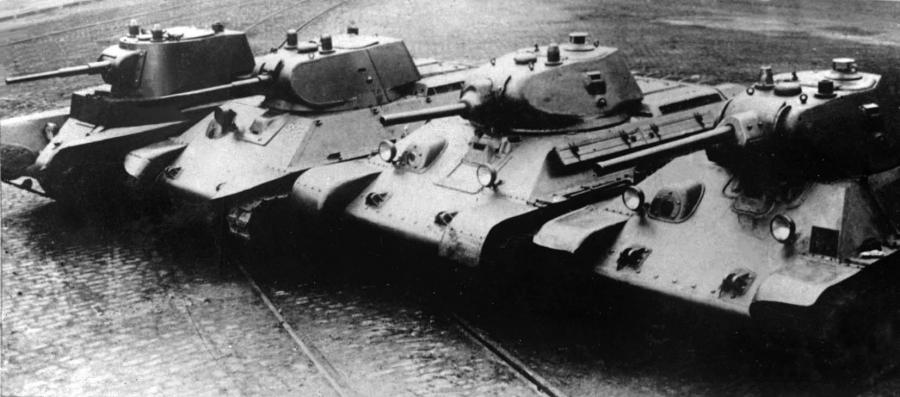A collection of Soviet medium tanks on the eve of war. From left to right - A-8 (BT-7M), A-20, T-34 Model 1940, T-34 Model 1941
On the eve of Barbarossa the Red Army was well equipped with tanks enjoying significant advantages in protection and firepower over German panzers. Even Soviet light tanks such as the T-26 and T-28 possessed better armament and armor than the German Panzer I and II light tanks. For example, the T-26, in its later models, came equipped with a 45mm gun capable of defeating most German tank armor fielded during Barbarossa.
For all the attention enjoyed by the T-34 it is important to remember the BT series (Bystrokhodnii Tank), based on the American Christie design, served as the Red Army's mainstay tank in 1941. The BT series in particular copied the mobility and speed inherent in the Christie tank design. Mobility and speed derived from an independent suspension and flexible track design coupled with a lightweight, powerful engine. The BT-5 also packed a punch with its adequate 45mm gun. A variety of other heavier tank designs, the multi-turreted T-28 medium tank and heavier T-35, rounded out Soviet armored ranks. These tanks featured either a combination of 45mm and either 75mm or 76.2mm guns capable of defeating any German tank armor at adequate ranges.
The biggest technical problems inherent in Soviet tanks existed outside the traditional determinants in tank power, i.e. armor and armament. The Red Army's tanks possessed poor command and targeting features including inadequate turret design, and nonexistent signals equipment. Design flaws such as these coupled with the poor training received by recruits worked against the Soviet advantages in armor and armament over the German Panzer I, II, and early model Panzer III's filling German panzer division ranks in early 1941. Nevertheless, in addition to the aforementioned tanks, the Red Army did possess two trump cards to anything the German army put in the field during 1941. The new heavily armed and well protected T-34 and KV-1 tanks possessed more than just slight advantages over their German foes. Moreover, the T-34 represented one of the finest tanks produced during the Second World War.
Picture from Ukraine and in Public Domain


